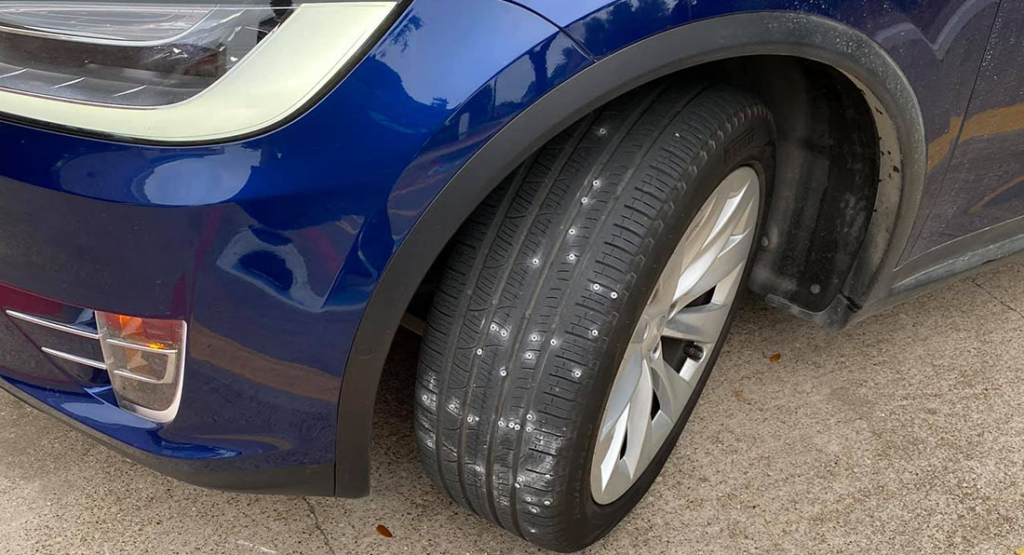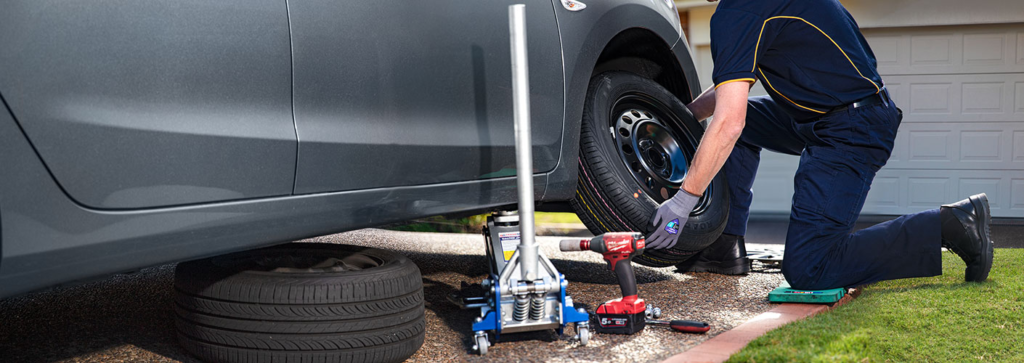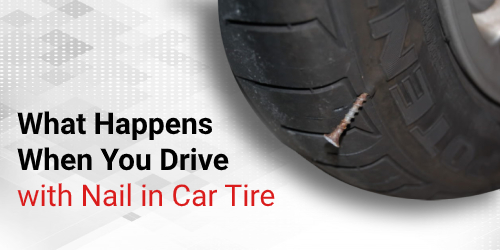While driving on the road, it is common that the rubber material in your tires often picks up various materials like debris, gravel, or pebbles. These substances usually don’t cause any harm to your car tires. However, there are some foreign materials like screws and nails that get stuck in your tires.

So have you ever experienced the same? Have you thought about what you would be doing if you get stuck in a similar situation? Whether it would be safe to drive?
Let’s get a quick sneak peek on what you should do if you find yourselves on the road with a screw or nail stuck in your tire.
Driving With A Nail In Car Tire

So if you think that is it possible to drive a car with a nail in the tire, then the answer is yes provided that your tire should still have air in it. You should never drive a vehicle with a blown-out tire as it is quite risky and unsafe. Nonetheless, if the tire is not flat, you can technically drive your car for immediate repairs to the nearest tire repair shop.
What To Do In Case You Suspect A Nail In The Tire.
If you find your tire losing pressure or punctures, activate your hazard lights immediately and carefully pull your car to the side. Check for signs of damage, and after confirming a punctured tire, determine if you could continue driving or towing service is required.
If the tire is flat, you must replace it with the spare one, and if you do not have a spare tire, you must tow your vehicle to the nearest repairing shop.
If you find a nail or a screw stuck in your tire, you may skip the towing service and drive to the nearest shop. However, the stuck object won’t let air leak out immediately but would result in a gradual loss of air pressure. Therefore, you must keep checking for air loss.

Tire professionals have the right skills, expertise, and tools to fix the stuck screws or nails. Though there are tire sealants, plugs, patches, and inflators, they are temporary solutions. Such fixes make your tires more susceptible to blow-out. Therefore professional repair is recommended that provides long term solutions.
Should A Damaged Tire Be Repaired Or Replaced?
Well, it all depends on the tire’s condition. The damaged tire can be repaired, but there are cases when the damage is irreparable, and in such situations, replacing tires is a better option. Here are the few factors considered by the professionals while deciding on repairing or replacing the damaged tires.

- Location of the damaged area: If the puncture is in tread areas, it is repairable. However, the hole in the shoulder or the sidewalls involves the replacement of the tire.
- Size of the damaged area: If the hole in the tire is less than a quarter of an inch, it is repairable, or else it requires replacement.
- The severity of the damaged area: The fewer punctures with a gap of 16 inches, they can be repaired. It is recommended and safer to replace the tire with multiple holes.
Signs And Symptoms Of Tire That Is About To Go Flat
Driving a car with the foreign objects stuck in it increases the chances of losing vehicle control that can cause serious accidents. Watch out the following signs of puncture to get to know in advance before it gets wholly flat and ensure safety.
- Tire Air Pressure: The latest models have an inbuilt Tire Pressure Monitoring System, usually called TPMS, that alerts the driver in advance about the underinflated tire. It can be used to monitor if the tire is punctured or losing air pressure.

As the tire starts losing the air pressure, the instrument panel triggers the warning light, resembling a horseshoe and an exclamation point.
- Forced moments in your steering wheel: A punctured tire would make it difficult to drive straight. You may notice your steering wheel getting heavier and pulling you in one direction.
- Reduced Acceleration: A flat tire will slow down your vehicle speed as at this particular moment, your car is riding on the rim. You might get a feeling of the choke to run your vehicle at your desired speed.
- Unusual Sounds: An underinflated tire gets overheated that can cause a blow-out. This sudden release of pressure produces a whooshing sound or can also create slapping noises as the deflated tire continues to come in contact with the road.

- Flat Tire: The flat tire can be easily seen and detected. However, sometimes the nail in car tire or other foreign objects are deeply embedded within the rubber that causes slow leakage and may not show the signs of damage. In such cases, the tire needs to be removed from the vehicle to check for leaks.
Always make sure that the health of your tires is good. You can get Tire Pressure Monitoring System Sensor Service Kit at The Auto Parts Shop. Stay safe and enjoy your drive!

Good!
Best view i have ever seen !
It’s an awesome post for all the online viewers; they will take benefit from it I am sure.